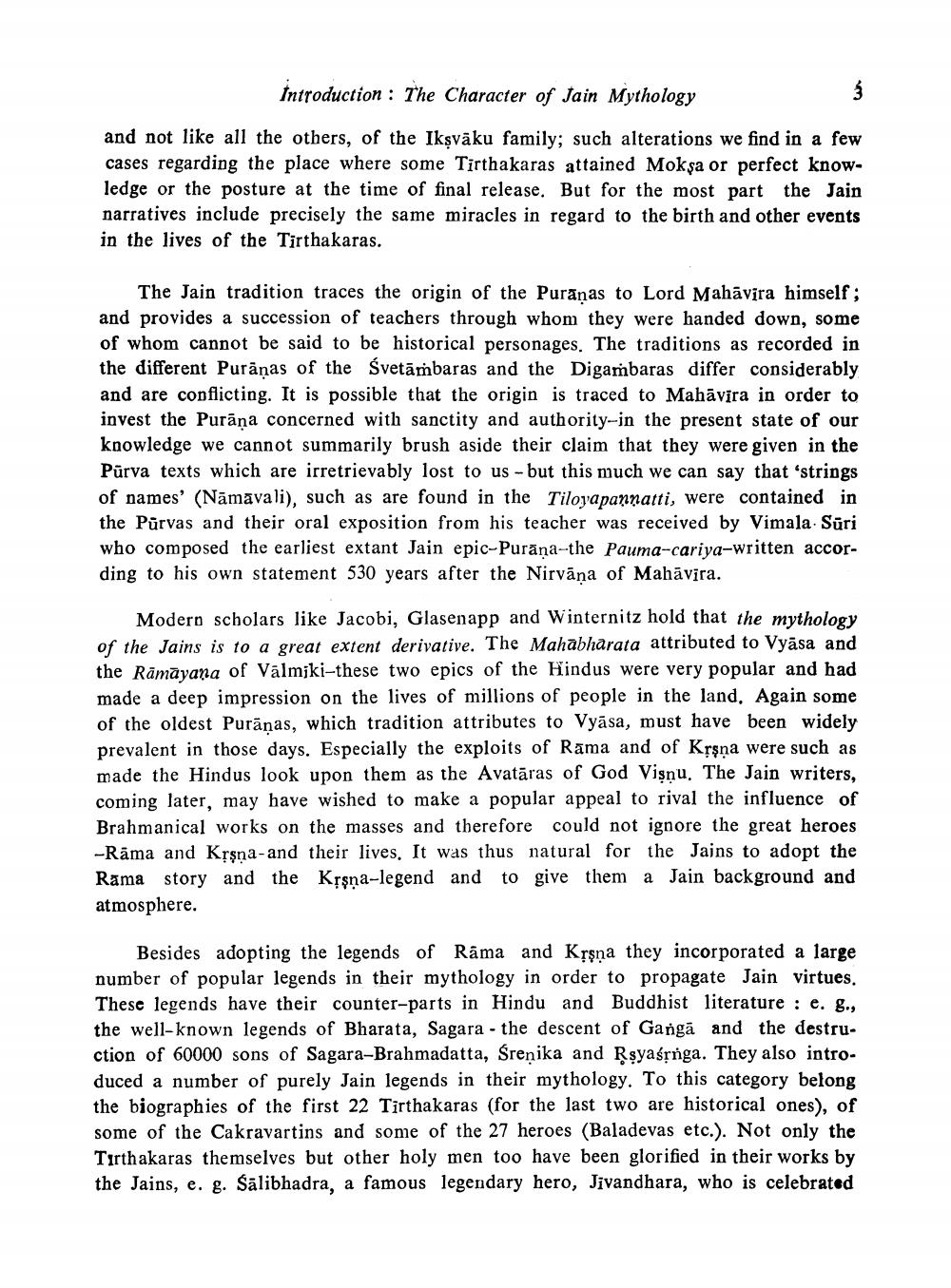________________
Introduction: The Character of Jain Mythology
and not like all the others, of the Ikşvāku family; such alterations we find in a few cases regarding the place where some Tirthakaras attained Moksa or perfect knowledge or the posture at the time of final release. But for the most part the Jain narratives include precisely the same miracles in regard to the birth and other events in the lives of the Tirthakaras.
The Jain tradition traces the origin of the Puranas to Lord Mahāvīra himself; and provides a succession of teachers through whom they were handed down, some of whom cannot be said to be historical personages. The traditions as recorded in the different Purāņas of the Śvetāmbaras and the Digambaras differ considerably and are conflicting. It is possible that the origin is traced to Mahāvīra in order to invest the Purāņa concerned with sanctity and authority--in the present state of our knowledge we cannot summarily brush aside their claim that they were given in the Pūrva texts which are irretrievably lost to us - but this much we can say that 'strings of names' (Nāmavali), such as are found in the Tiloyapannatti, were contained in the Pūrvas and their oral exposition from his teacher was received by Vimala. Sūri who composed the earliest extant Jain epic-Purāna-the Pauma-cariya-written according to his own statement 530 years after the Nirvāna of Mahāvira.
Modern scholars like Jacobi, Glasenapp and Winternitz hold that the mythology of the Jains is to a great extent derivative. The Mahabharata attributed to Vyāsa and the Rāmāyana of Valmiki-these two epics of the Hindus were very popular and had made a deep impression on the lives of millions of people in the land. Again some of the oldest Purānas, which tradition attributes to Vyāsa, must have been widely prevalent in those days. Especially the exploits of Rāma and of Krşna were such as made the Hindus look upon them as the Avatāras of God Vişnu. The Jain writers, coming later, may have wished to make a popular appeal to rival the influence of Brahmanical works on the masses and therefore could not ignore the great heroes -Rāma and Krşna-and their lives. It was thus natural for the Jains to adopt the Rama story and the Krsna-legend and to give them a Jain background and atmosphere.
Besides adopting the legends of Rama and Krşņa they incorporated a large number of popular legends in their mythology in order to propagate Jain virtues. These legends have their counter-parts in Hindu and Buddhist literature : e. g., the well-known legends of Bharata, Sagara - the descent of Gangā and the destru. ction of 60000 sons of Sagara-Brahmadatta, Śrenika and Rşyaśộnga. They also introduced a number of purely Jain legends in their mythology. To this category belong the biographies of the first 22 Tirthakaras (for the last two are historical ones), of some of the Cakravartins and some of the 27 heroes (Baladevas etc.). Not only the Tirthakaras themselves but other holy men too have been glorified in their works by the Jains, e. g. Sālibhadra, a famous legendary hero, Jivandhara, who is celebrated




